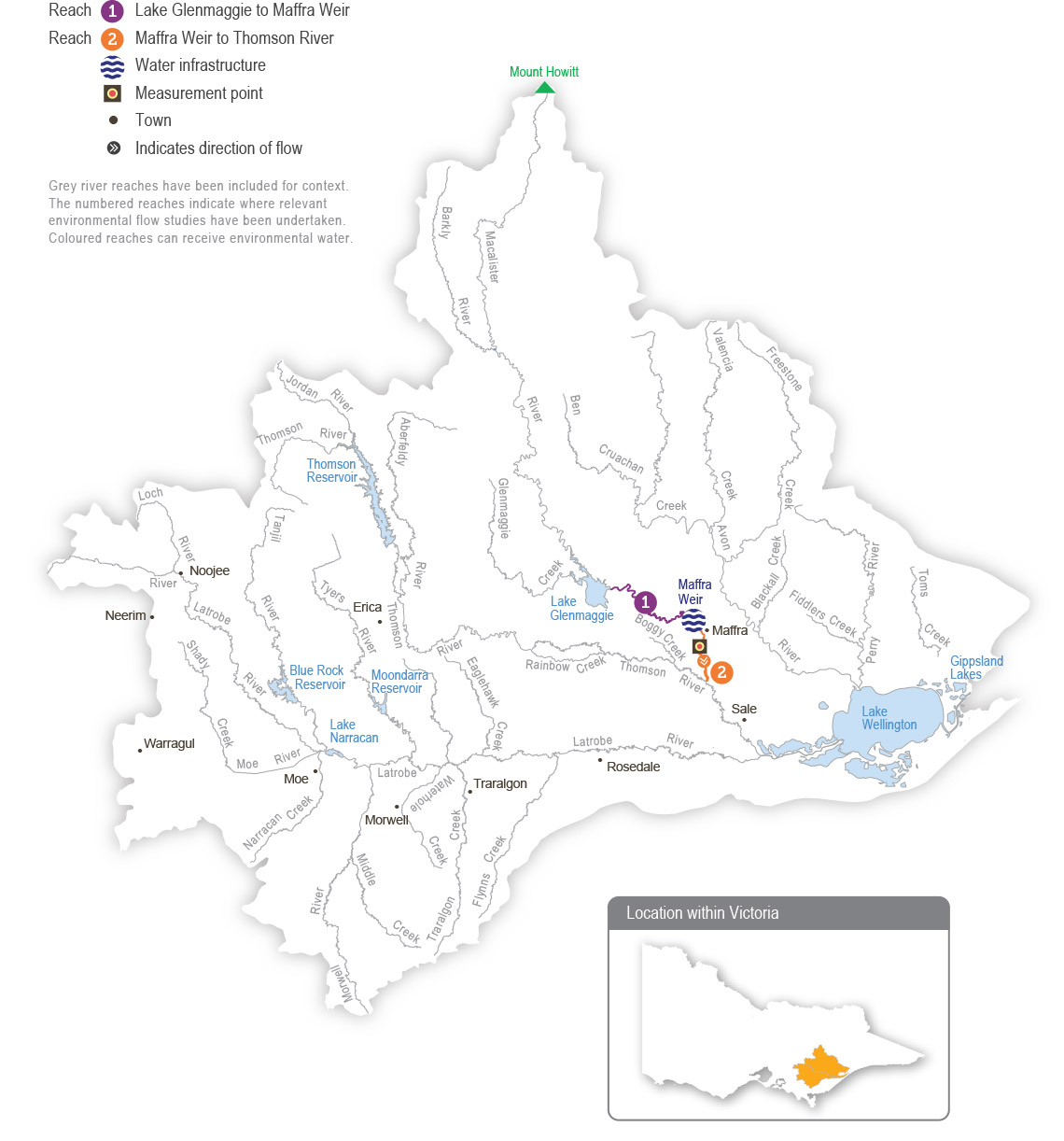Wirn wirndook Yeerung (Macalister River) is a very important river to the Gunaikurnai people. It is a pathway that connects the Snow Country to the heart of Gippsland. It is a pathway to ceremonial grounds and a known special men’s place to Elders. Its traditional name is Wirn wirndook Yeerung, which translates to ‘song of the male fairy wren’.
Yeerung is the men’s totem. This river has many cultural resources and extensive important sites along the whole system.
The Gunaikurnai have had a continued connection to Gunaikurnai Country for over 50,000 years, including with the waterways in the Latrobe system into which Wirn wirndook Yeerung (Macalister River) feeds. For the Gunaikurnai as Traditional Owners, there are immense challenges to heal, protect and manage Country which has been drastically altered since colonisation. “As Gunaikurnai, we see our land (Wurruk), waters (Yarnda), air (Watpootjan) and every living thing as one. All things come from Wurruk, Yarnda and Watpootjan and they are the spiritual life-giving resources, providing us with resources and forming the basis of our cultural practices. We have a cultural responsibility to ensure that all of it is looked after” (Water is Life: Traditional Owner Access to Water Roadmap 2022 - Gunaikurnai Nation Statement). This cultural landscape is dependent on culture and Aboriginal management.
The Gunaikurnai Land and Waters Aboriginal Corporation (GLaWAC) is working with the West Gippsland CMA to determine how to express Gunaikurnai objectives for water in a way that contributes to seasonal watering proposals from the perspective of traditional custodians, with traditional knowledge. GLaWAC has membership on the Macalister Environmental Water Advisory Group (EWAG).
GLaWAC has expressed that more water needs to go down Wirn wirndook Yeerung (Macalister River) between Lake Glenmaggie and Lake Wellington to improve water quality, including to address the threat of salinity and to support plants and animals that have cultural values and uses.
GLaWAC has also questioned the timing of watering events and a desire to provide increased water depth to promote downstream fish migration and spawning, deeper water pools to prevent water-quality degradation, and more variation in water levels to better mimic natural conditions.
Traditionally the landscape – which includes Wirn wirndook Yeerung (Macalister River), and branches and associated floodplains – has been a rich source of food, medicine and resources for the Gunaikurnai people. In the area, there are many sites of cultural significance near the river and around Lake Glenmaggie. The Gunaikurnai have moved through the landscape along the waterways for thousands of years, sourcing food and plants along the way.
From the perspective of the Gunaikurnai, the land and waterways flowing to the Gippsland Lakes are interconnected and cannot be considered separately where decisions can impact downstream areas. The lower Latrobe wetlands and the rivers that feed them, including Wirn wirndook Yeerung (Macalister River), have important cultural significance to the Gunaikurnai.
Watering requirements to support cultural values and uses include:
- timing the delivery of water for the environment planned in partnership with GLaWAC to support a seasonal flow regime and wet and dry periods that embody healthy Country
- maintaining freshwater supply to the Durt-Yowan (Latrobe River) estuary, Dowd Morass, Sale Common and Heart Morass, and associated freshwater habitats. The lower Latrobe wetlands are an important resource for the Gunaikurnai
- providing connectivity between reaches and onto floodplains to support dependent plants and animals with cultural values and uses of significance to the Gunaikurnai
- maintaining water quality to support the health of native plants and animals with cultural values and uses of significance to the Gunaikurnai.
West Gippsland CMA engaged with the GLaWAC Cultural Water Team about Macalister watering priorities for 2023-24, with engagement planned to continue in the 2023-2024 water year.



